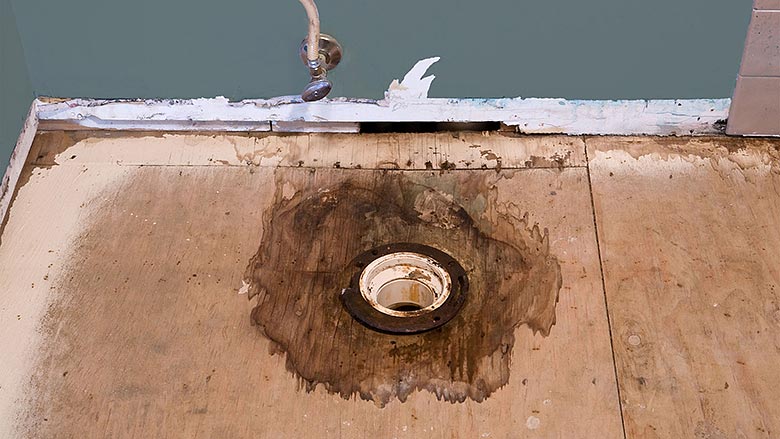Listed here below you can discover a good deal of high-quality resources about Looking for Signs of Water Damage in the Bathroom.

The bathroom is very vulnerable for damp accumulation and also potential water damage as a result of the regular use water in it. This article uses easy assessment techniques to assist detecting water damages hazards.
The regular use water in the restroom makes it incredibly at risk for moist build-up and prospective water damages. By examining it on a regular basis, you can reduce water associated problems.
The complying with collection of inspections is easy to carry out as well as need to be done as soon as in every 3 months in order to keep your bathroom in good shape and to avoid prospective water problems brought on by the bathtub, the shower, pipe joints and plumbing, sinks, cabinets, and the bathroom
Do not disregard doing these examinations and also be thorough while performing them. Keep in mind that these easy assessments can conserve you a great deal of cash by giving early indications for water damage
Bathtub and Shower
The shower as well as tub need special interest as well as upkeep. Inspect the ceramic tiles as well as replace if broken. Ensure that there is no missing cement in between the tiles. Inspect as well as replace split caulking at joints where the wall surfaces fulfill the flooring or the bath tub. Obstructed drains and pipes problems will avoid the tub from drying and also may indicate serious problems below the tub. Speak with an expert right away to avoid architectural damage. Pay attention to discolorations or soft areas around the bathtub walls as they might show an inner leakage.
Plumbing
Signs for water damages are tough to find given that a lot of pipelines are set up inside the wall surfaces.
Pay special attention to flooring and wall surfaces dampness and also spots as they might suggest an invisible plumbing issue. Check wetness levels in adjacent spaces as well.
Sinks as well as Cabinets
Sinks and closets are exposed to dampness and moisture everyday and are often overlooked. Evaluate routinely under the sink and on the kitchen counter over it. Repair any drip in the catch as it might suggest drain troubles. Browse the sink, slow draining pipes might suggest a blocked drainpipe. Change sink seals if they are broken or loosened.
The Bathroom
The bathroom is a vulnerable water joint. Inspect the water lines and look for leaks around the commode seat, in the pipe, and under the water container. If you find any type of signs of wetness on the floor around the commode, check for leakages in the toilet rim and also storage tank seals.
Be aware that hanging commode bowl antiperspirants boosts the chances for obstructions.
Water Damage Signs In The Bathroom To Avoid Cleanup
Musty smell
This is one of the easiest signs to catch because musty smells are so odorous. The damp, earthy, moldy smell should be a big red flag. The smell will develop when moisture gets trapped in surfaces, and begins to facilitate mold growth. Leaking pipes under cabinets, inside walls, and behind shower fixtures will cause moisture to stay trapped and not dry, which will lead to mold growth and spread. As soon as you notice any musty smells in your bathroom, have it checked for hidden water damage and cleanup signs.
Visible mold
If the smell isn’t there to give it away, sometimes you will actually see mold growth. Finding mold in your bathroom is a serious problem, because mold is very harmful to your health. By the time mold growth is visible, it also means that water damage has already occurred and been present for some time. The only way the mold problem can be resolved is to find the source of the moisture and get it stopped. To safely and adequately remove mold, you need to have professionals handle the remediation. Do not waste any time in getting mold problems addressed, fixed, and sanitized so that you can protect you and your family from the many respiratory symptoms caused by mold exposure.
Damaged floors
Bathroom floors should be able to withstand some exposure to water while still remaining in good condition. However, when excess exposure or water leaks occur, they will begin to damage even the most water-resistant flooring. If you notice any cracking, bubbling, staining, or warping on your bathroom floors, there is probably a water leak somewhere causing the distortion. If you notice areas of the floor have become softer, or even have a spongy feeling, there is probably damage to the subfloor. Subflooring is typically made up of plywood. When plywood is exposed to water or moisture, it will absorb it. Once it has become saturated, the weight of the excess water will cause the wood to swell and soften. Check the floors in your bathroom frequently to catch any of these sings before they lead to damaged subflooring.
Changes on walls
When water leaks behind walls, it will cause changes in the drywall. Peeling plaster, blistering paint, and soggy wallpaper are all good indicators that excess water is building up behind the wall. Water leaking behind drywall will cause it to swell and be soft to the tough. If you start to notice gaps along the trim of your walls, or where tile meets the wall, it could also be a strong indicator that there is a leak behind the wall. Any changes, distortion, or damage on the walls should be evaluated as soon as you notice it to prevent further water damage and cleanup.

As a keen person who reads about Preventing Water Damage in the Bathroom, I was thinking sharing that information was a smart idea. Do you know somebody who is interested in the subject? Take a moment to share it. Kudos for your time. Please visit our blog back soon.
Book Inspection